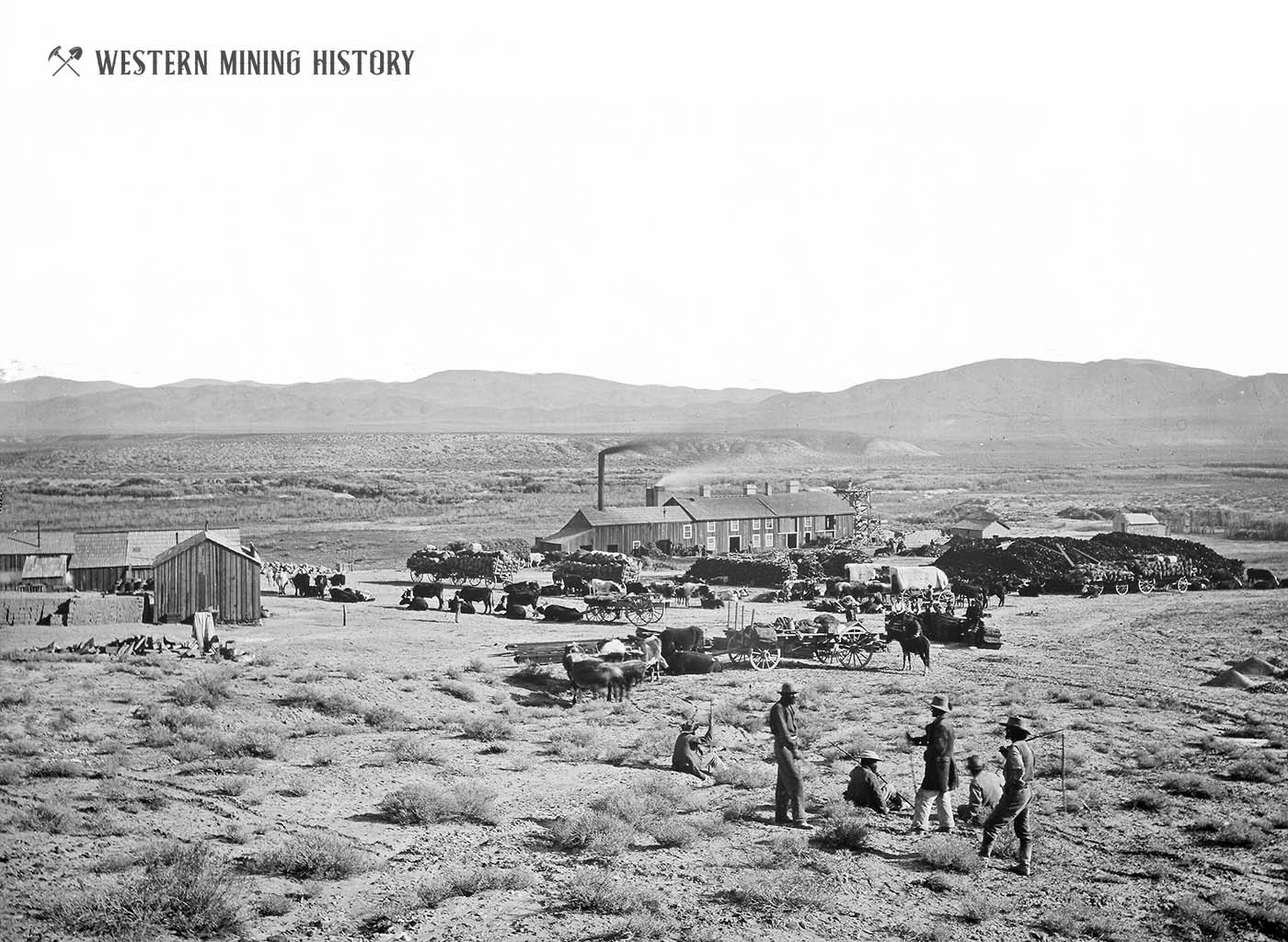Oreana History
A post office was established at Oreana in 1867, which operated intermittently until 1883. Around 1913, Oreana Station was settled a few miles away near the Central Pacific Railway when the Nevada Short Line Railway built a line from Oreana Station to the new town of Rochester, where a mining excitement had begun in 1913.
Historical newspaper articles often referred to this latter iteration of the town as just Oreana, which has caused some confusion in descriptions of the towns history. It seems that the post-1900 town, Oreana Station, was in no way related to the original Oreana.
The "Most Extensive" Furnaces in the State
After a five-stamp mill was relocated from Trinity to the eastern bank of the Humboldt River in October 1865, Oreana emerged on a nearby bluff. The mill was used to crush ore from the Montezuma mine in Arabia, and another mill was added in the summer of 1866 when A. W. Nason became superintendent of the Trinity & Sacramento Co., which owned part of the Montezuma.
Nason took the initiative to construct a large smelting facility to process Montezuma ores and eventually acquired the entire Montezuma claim. The construction costs amounted to $300,000, and the smelter started producing bullion in late 1866.
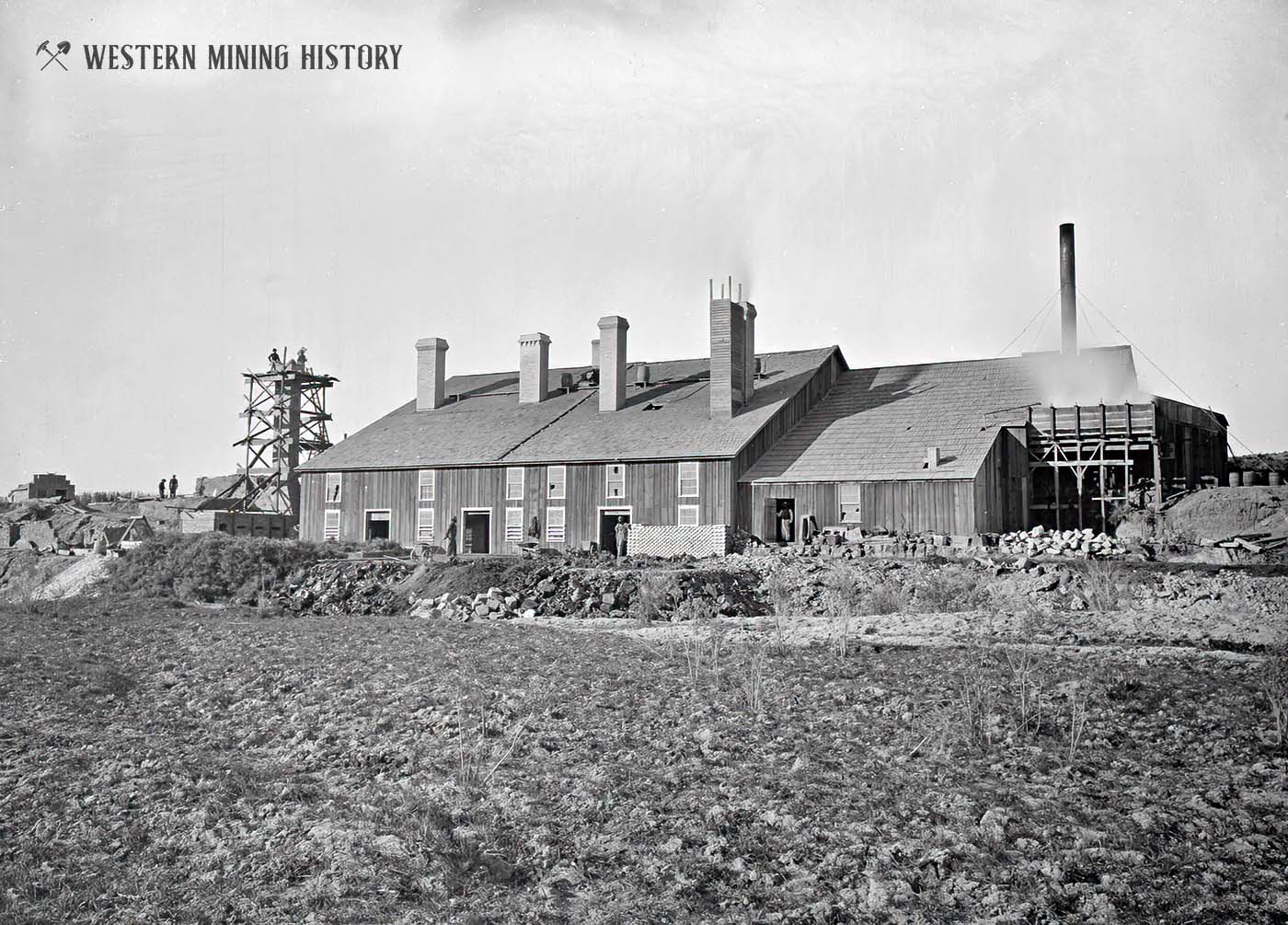
The March 25, 1868 edition of the Gold Hill News described the new smelting works:
Montezuma furnaces - these are now in full blast. As we passed through Oreana five columns smoke were ascending from as many chimneys and forming a dark cloud of antimonial vapors above the town, calling to mind the early days of Pittsburg when iron smelting furnaces were first started in that city and watching the slowly rising vapors mingling with the clouds of the upper air, we fancied we saw a great city rising on the banks of the Humboldt, rival in wealth, power and greatness of that famous iron smelting city at the junction of the Alleghany and Monongahela rivers.
The furnaces operated around the clock, emitting dark clouds of smoke and vapors over the town. By 1868, Oreana shipped more bullion than any other place in Nevada, and the smelting works were renowned as the most extensive in the state, generating $45,000 in monthly revenue.
A notable customer of the smelter's lead product was the Selby Foundry in San Francisco. This facility dropped molten lead through the 200-foot shot tower to produce spherical lead pellets used for ammunition.
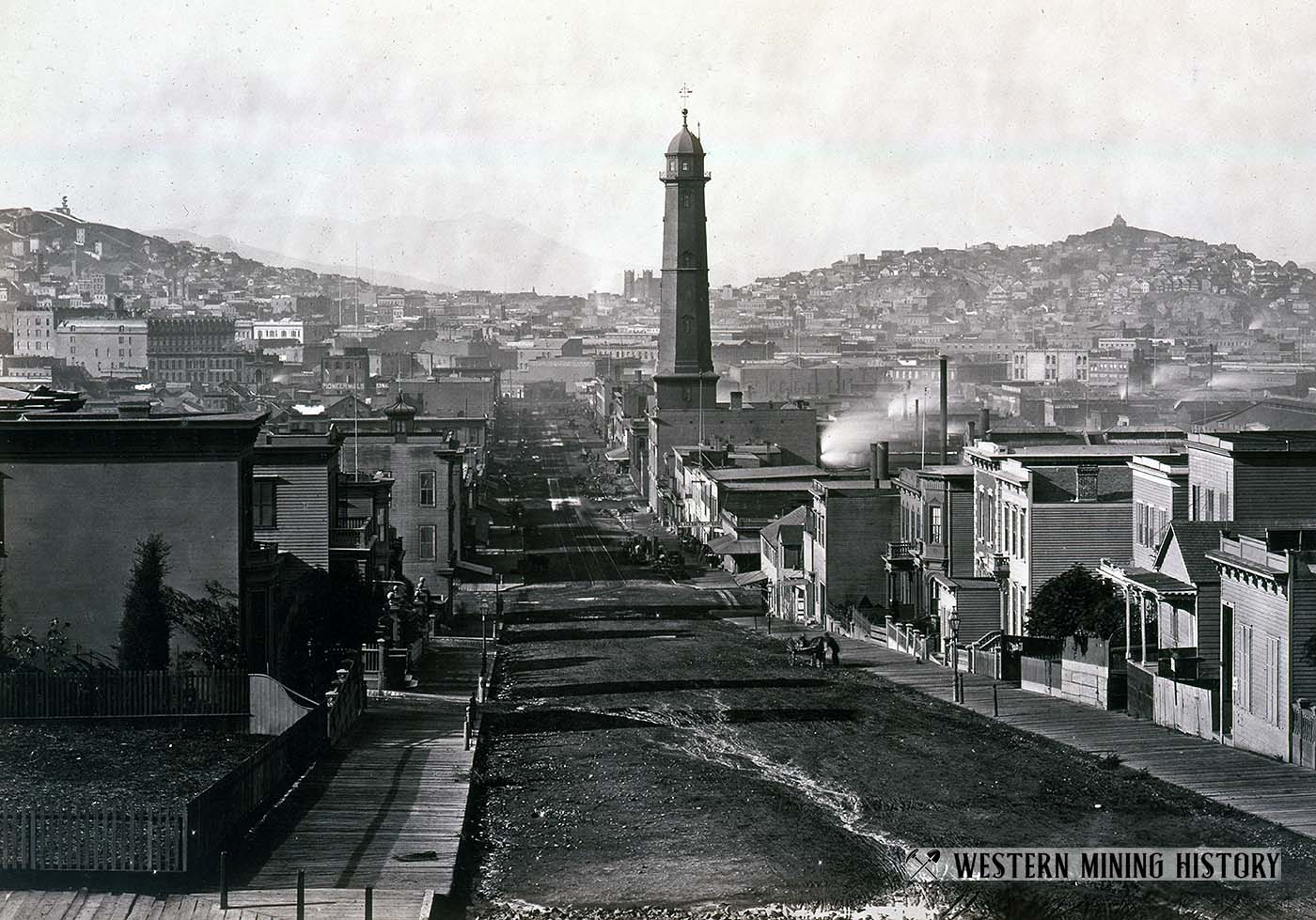
As was often the case with mills and smelters built to handle ore from primarily one mine, the facility soon ran short of ore and was often idled. The following advertisement seeking ore for the smelter appeared in the April 30, 1870 edition of the Elko Independent.
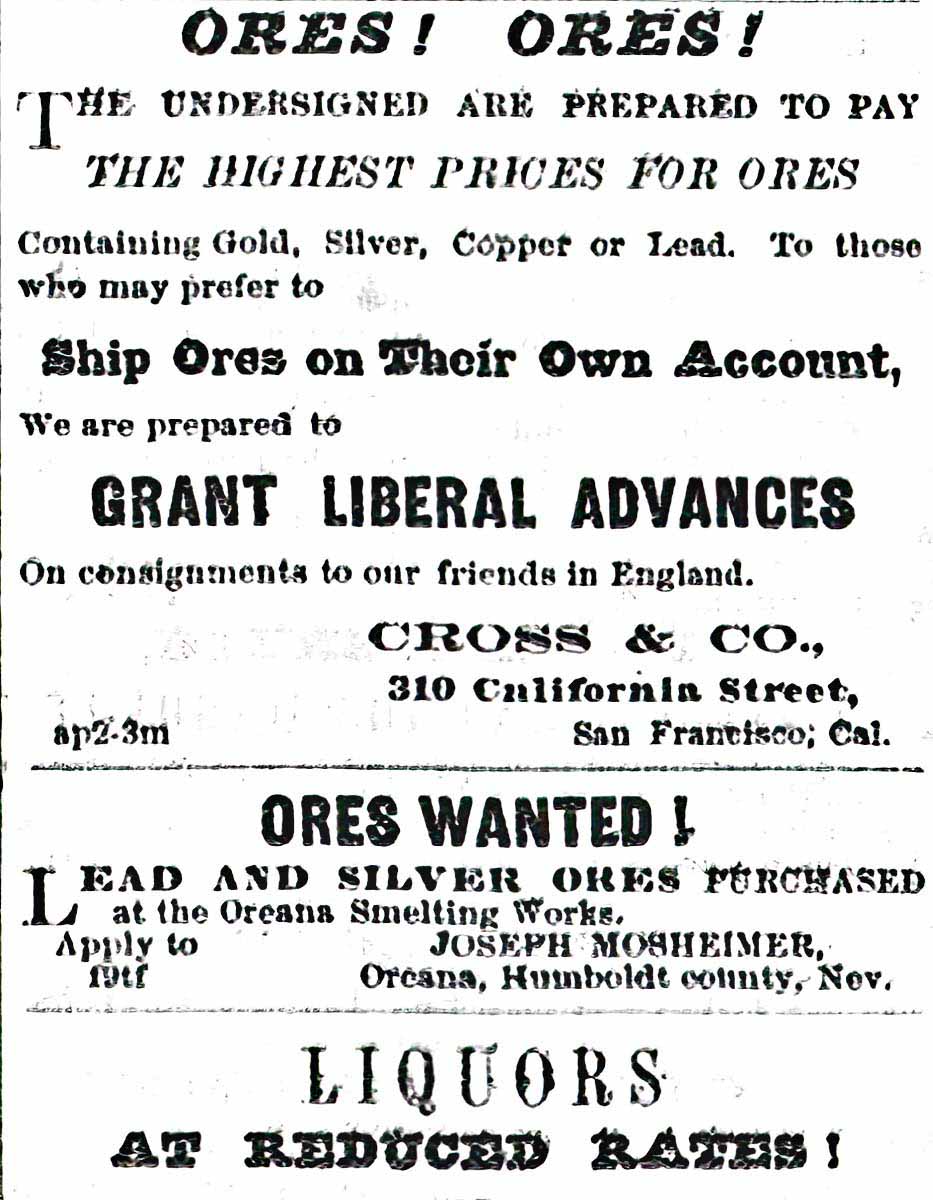
Despite its initial success, financial difficulties plagued the operation. Accumulating debts and dwindling availability of ore led to a shutdown in 1869, and subsequent owners who attempted to revive the smelter also faced the same difficulties in 1870 and 1871.
After intermittent operations throughout the 1870s, the Montezuma smelter was eventually destroyed by fire. Today, remnants of its foundations and slag piles can still be found.
Oreana Town
In November 1866, a toll bridge was built, and Oreana was relocated to a more central location near a horseshoe bend in the Humboldt River, closer to the milling activities.
The town experienced rapid growth, establishing a post office in February 1867, along with a hotel, general store, boarding houses, restaurant, meat market, blacksmith shop, livery stable, and saloons. With a population of 200 to 300 people, Oreana became the largest town in the Humboldt Valley.
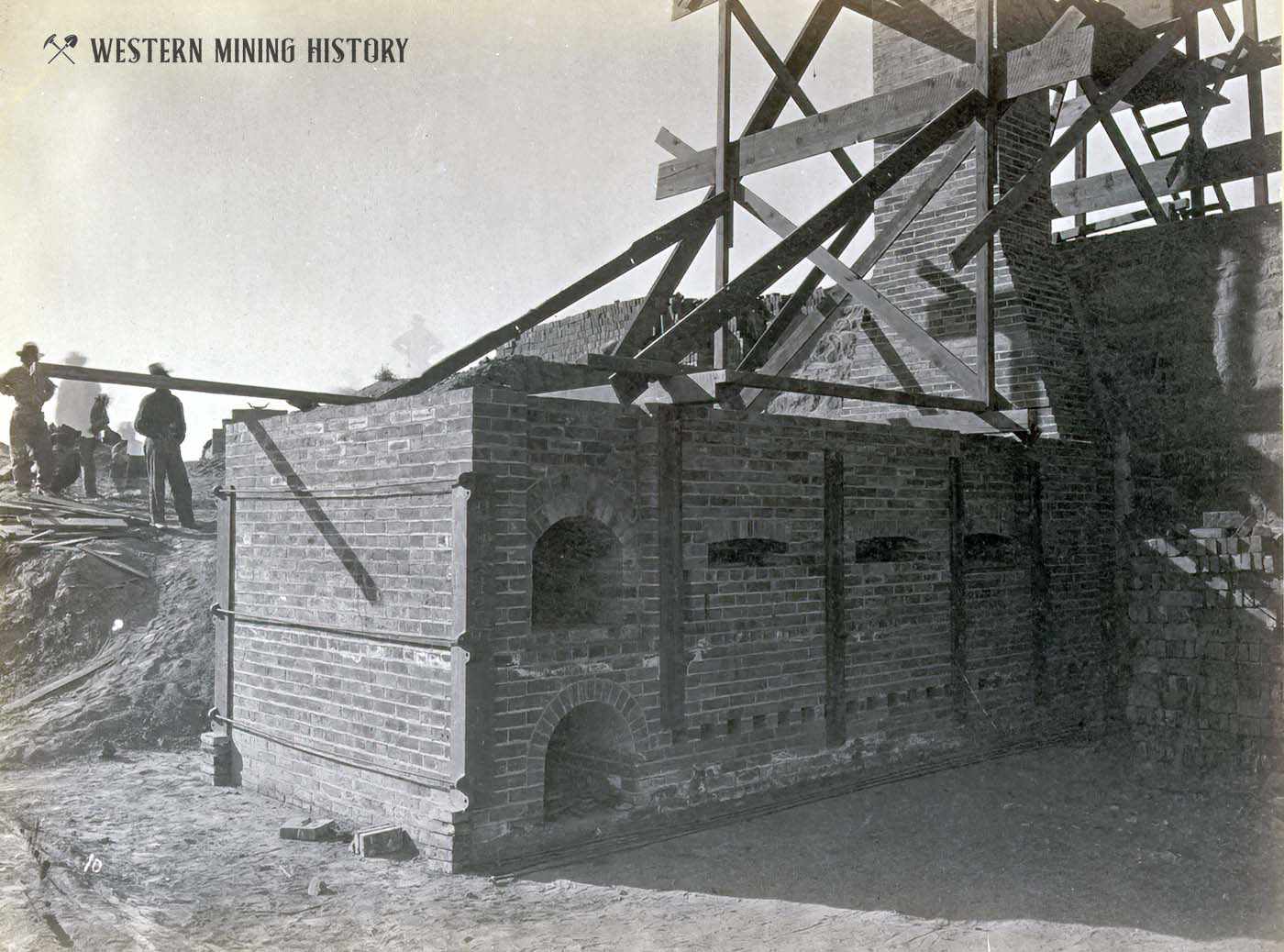
Noteworthy politician, inventor, and abolitionist Benjamin Douglas visited Oreana in 1868. The notice for his appearance schedule was printed in the October 10, 1868 edition of the Gold Hill Daily News (this notice is interesting in that it highlights what the important communities were in northwest Nevada in the late 1860s).
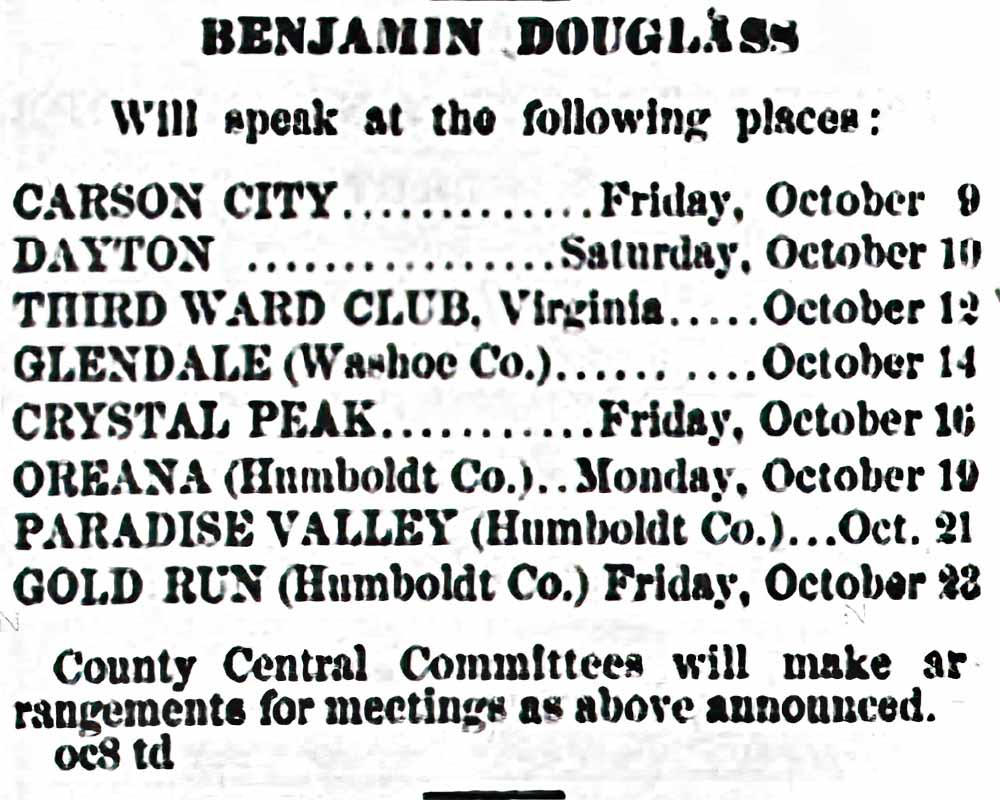
Not many events in Oreana that made the news, but there was the case of arson at the residence of Madam Dubois that was reported in August of 1870:
The madam was aroused from her sleep by a volume of smoke entering her bed room, partially suffocating her. She succeeded in emerging from the building, and discovered the fire beneath, in a large quantity of hay placed there for the purpose. The fire was subdued without much damage.
A woman of large acquaintance has been arrested on suspicion of committing the deed, with evidence strongly against her. The examination is now going on. Jealousy prompted the offense. Mary Griffin, charged with attempting to commit arson, was discharged from custody, the evidence being insufficient to convict her.
Unfortunately no photos of the town are available. With the decline of the mines and the loss of the smelter, Oreana faded into obscurity in the 1870s - and when a town was no longer newsworthy not much ended up being recorded about it. Today, only collapsed cellars serve as reminders of the Oreana townsite.
Nevada Mining Photos
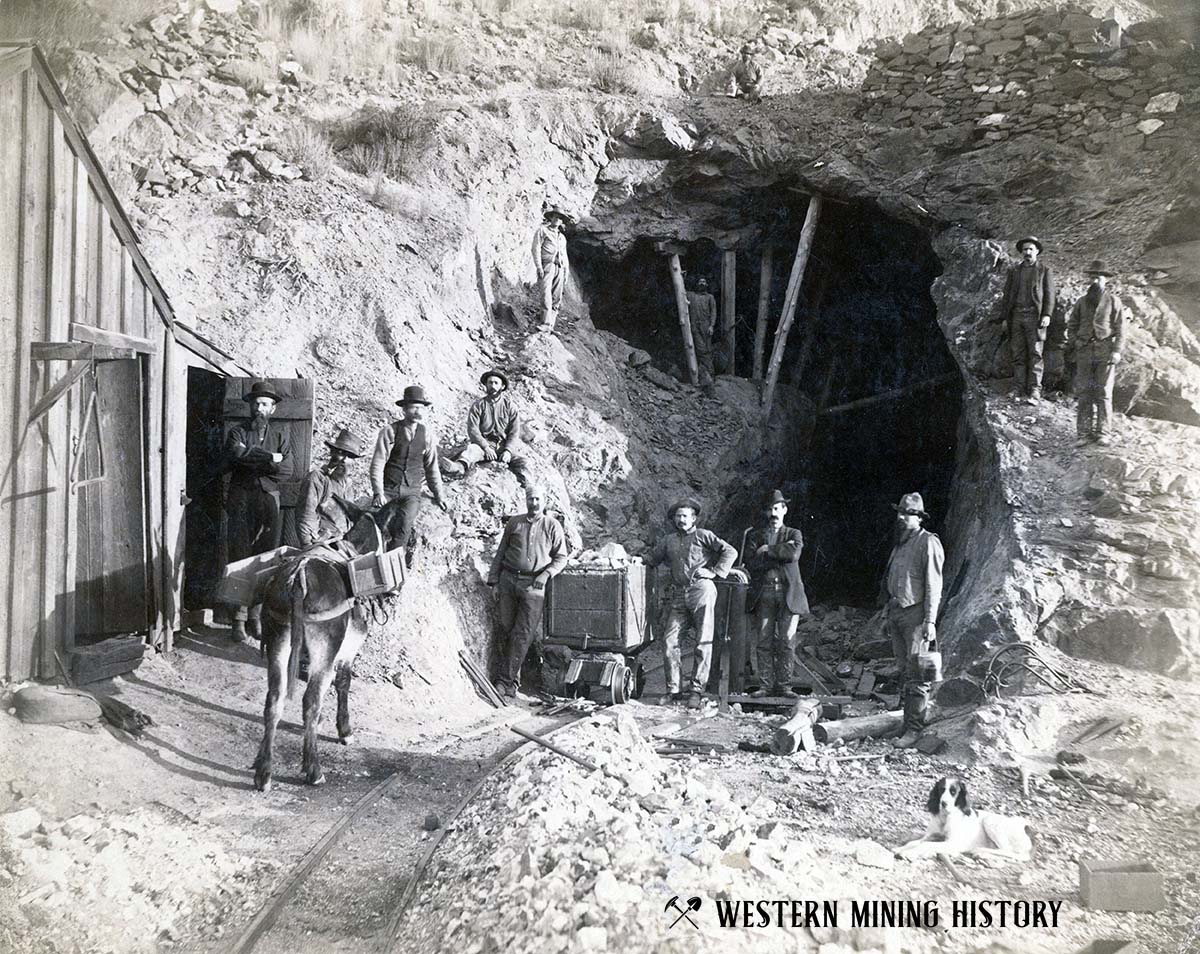
A Collection of Nevada Mining Photos contains numerous examples of Nevada's best historic mining scenes.
Nevada Gold

Nevada has a total of 368 distinct gold districts. Of the of those, just 36 are major producers with production and/or reserves of over 1,000,000 ounces, 49 have production and/or reserves of over 100,000 ounces, with the rest having less than 100,000 ounces. Read more: Gold Districts of Nevada.
